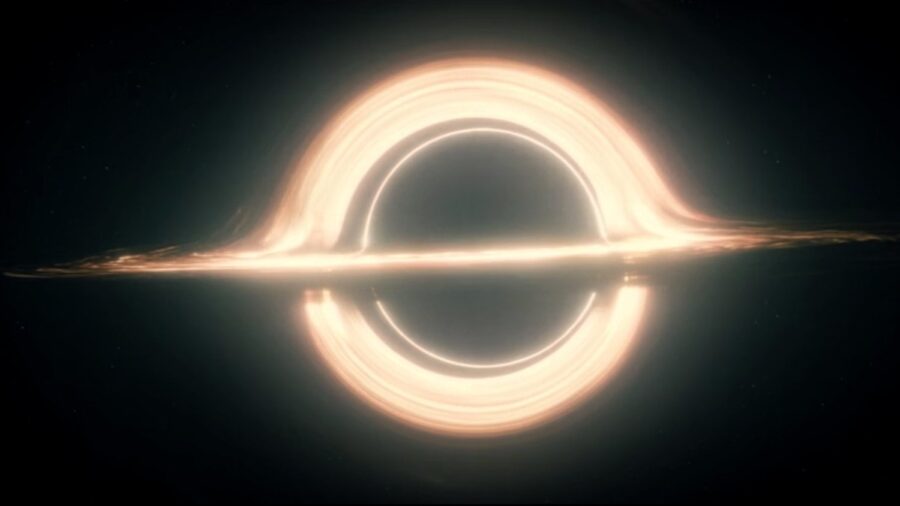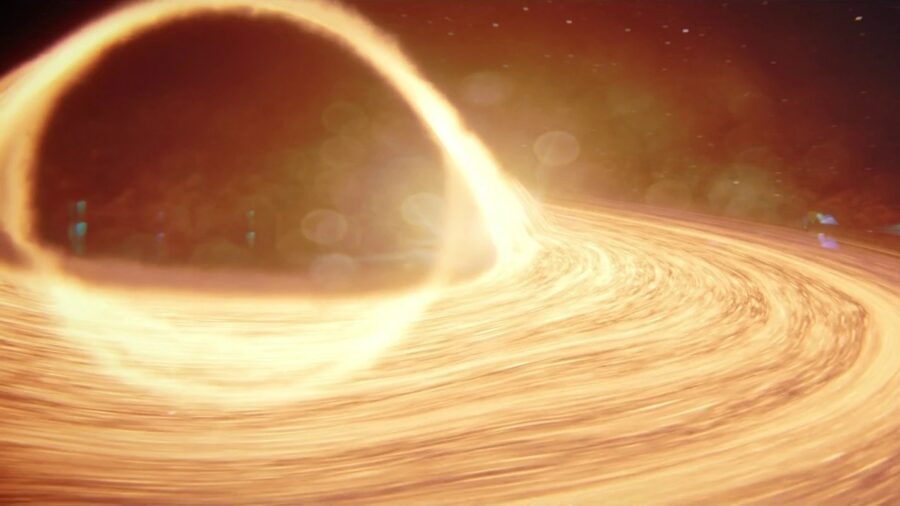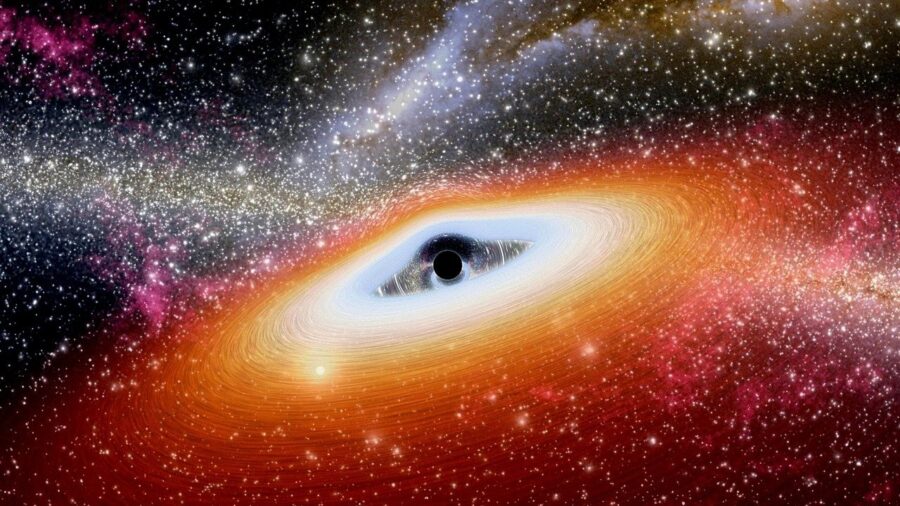Black Holes Are More Powerful And Terrifying Than We Thought

It turns out black holes are like the Homer Simpson of space. While previously believed to eat slowly, researchers now believe that they devour food much faster than we previously thought, much like Homer can devour a plate of pink frosted donuts in a matter of seconds. According to Northwestern, new 3-D simulations show that these terrifying voids gobble up surrounding matter in a matter of months, compared to the hundreds of years astrophysicists previously estimated.
Though scientists knew black holes consumed matter, it was assumed to take years, though new research shows it happening in months.
The groundbreaking study was led by Northwestern University and published in The Astrophysical Journal on September 20. For decades, scientists believed that supermassive black holes, residing at the centers of galaxies, fed slowly over hundreds to hundreds of thousands of years. However, the new research, based on high-resolution 3D simulations, paints a different and much more ominous picture.
According to these simulations, when black holes spin, they twist the surrounding space-time, causing the gas and matter in their accretion disks to be torn apart. This process creates inner and outer subdisks, and the black holes promptly devour the inner ring. Subsequently, debris from the outer subdisk rushes inward to replenish the vacuum left by the consumed inner ring, restarting the eating cycle.
“Classical accretion disk theory predicts that the disk evolves slowly. But some quasars … appear to drastically change over time scales of months to years.”
Nick Kaaz, lead researcher at Northwestern
While no one blames previous experts for guessing it would take hundreds of years for black holes to feast upon the surrounding matter, the simulation now calculates the entire process of eating, refilling, and eating again only takes a few months.

The new black hole study fills in a few blanks in questions scientists have been trying to answer for ages. For instance, quasars are some of the universe’s brightest lights, and they’re known to flare up and then disappear suddenly and unpredictably. “Classical accretion disk theory predicts that the disk evolves slowly,” explains Northwestern’s Nick Kaaz, the study’s leader. “But some quasars … appear to drastically change over time scales of months to years.”
Kaaz described how traditional accretion disk theory has no explanation for quasars’ disappearance but that this new simulation can. Quasars result from black holes scarfing down gas from their accretion disks, so the new theory on the quick appetite of black holes could explain the bright light’s quizzical behavior.
To learn more about the black holes’ eating habits, the study leveraged one of the world’s most powerful supercomputers, Summit, at the Oak Ridge National Laboratory, to conduct 3D general relativistic magnetohydrodynamics (GRMHD) simulations of a tilted accretion disk. Unlike earlier simulations, this one incorporated a wide range of physical factors, including gas dynamics, magnetic fields, and general relativity, offering a more complete representation of black hole behavior.

Black holes, being extreme general relativistic objects, have a profound impact on the space-time around them. As they rotate, they drag space around them, a phenomenon known as “frame-dragging.” This causes the entire accretion disk to warp and gas from different parts of the disk to collide, creating bright shocks that propel material closer to the black hole.
Quasars result from black holes scarfing down gas from their accretion disks, so the new theory on the quick appetite of black holes could explain the bright light’s quizzical behavior.
However, this warping leads to the innermost region of the disk breaking away from the rest, resulting in the subdisks moving independently, much like the wheels of a gyroscope. Kaaz elaborated that the tearing region, where the inner and outer subdisks disconnect, is where the black hole’s dominance becomes apparent. Despite friction’s attempts to keep the disk together, the twisting of space-time by the spinning black hole prevails, pushing the inner disk toward its ultimate consumption.
Beyond its impact on quasars, this study may help answer fundamental questions about the feeding mechanisms of black holes. Understanding how gas reaches black holes and fuels them provides crucial insights into the lifespan, brightness, and observable characteristics of accretion disks, offering a deeper understanding of these enigmatic cosmic objects. This research brings us one step closer to comprehending the mysteries of supermassive black holes and their voracious appetites.












